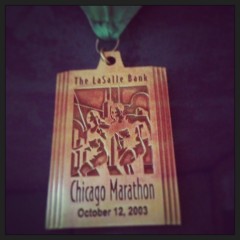By Gini Dietrich
When I began my speaking career nearly five years ago, the thing I heard over and over again was, “This whole doing business on the Internet thing is a fad.”
I even once had someone pull me aside after a three hour workshop and tell me he was rooting for me as I traveled down a dark path not everyone wanted to follow.
But here we are. Five years later. This Internet thing isn’t a fad, nor is social media. In fact, social is becoming more about how you share information, how customers engage with you, and how prospects find you.
That said, many organizations aren’t yet taking advantage of what the web has to offer them for business growth and, at this point, it seems very overwhelming to many.
So how do you build your brand when you’re first starting out and it seems like you’ll never get the business where it needs to be online?
Baby steps.
It’s Not a Sprint
A few weeks ago, I did an interview with ClippPR. During the interview, the founder – Thomas Knoll – asked me this very question. I asked him if he’s ever run a marathon and he laughed out loud at me.
So I explained how, when you run a marathon, you don’t go out and buy new shoes, shorts, and a wicking shirt and then run 26.2 miles. You buy new shoes and you begin to train. You break in your shoes. You start off by running (or sometimes walk/running like I did) three miles. Then you add another mile or two every weekend until you’ve worked yourself up to 22 miles (which is the most you run before you do the race).
To go from couch to marathon easily takes three or four months. It’s impossible to run a marathon without that kind of training.
The same goes for building your organization’s brand online. While there are some quick things you can do to see an immediate effect, they don’t last long and should never be part of your larger strategy.
The Branding Marathon
Here are six things you can do to start slowly, begin to train, and win the branding marathon. Some of this may be basic for some you, but we’ve discovered internally that we all need a reminder on how to get back to basics when we’re in the middle of a big campaign.
- Comment on articles and blogs. Many of us don’t have the time or inclination to create our own content. By commenting on articles and blogs in your industry, you begin to build a relationship with the people who can help you tell your story. It’s a heck of a lot easier to leave an intelligent comment (even if you disagree) on something someone else has written than to create the content yourself.
- Figure out where your customers and prospects participate online. One of the very best ways to find out where your audiences participate online is to ask them. But there are tools to help, as well. You can use Fliptop, Xobni, or Rapportive to help you make educated decisions on where you should spend your time.
- Engage in conversation on one social network. After you do the second tip, you’ll have a pretty good idea of where you should spend your time. Rather than take a stab in the dark and assume you should be on Facebook or Twitter, let your research about your own audience help you decide. And start with only one network. You can add a second later.
- Follow, like, or circle similar accounts. This is something many of us do in the beginning and, as our networks begin to grow, we stop doing it. In the beginning, you want to go into the social network you’re using at least daily and find people to follow, like, or circle. On Twitter, for instance, you can search profile descriptions to find people in your industry or people who have a need for your product or service. Follow those people and find a way to begin a conversation.
- Share content that supports your thinking. When I first began using social media, my strategy was to share 80 percent content that supports the way we think and 20 percent of our content. Six years later, I still practice that philosophy. The 80 percent comes from places such as SmartBrief, my Feedly feeds, and articles and blog posts where we are quoted or featured.
- Look for opportunities to bring people back to something you own. As you begin to grow your online presence, you want to bring people back to something that you own – your website or blog, for instance, to have the benefit of driving traffic to your own sites. If you do the first tip here, for instance, you can post a synopsis of the article or blog post and your comment on your own site and then link to the original article. When you share that content, you do so to the page on your site and the author of the original piece gets the benefit of both increased traffic and a backlink. Both of you win.
You can do all six of these, only one of them, or a combination of them. Whatever you decide to do, and no matter where you are in the process (just beginning, need to go back to basics, or scaling), any one of these will help you compete in the branding marathon.
A modified version of this first appeared in my weekly AllBusiness column.
